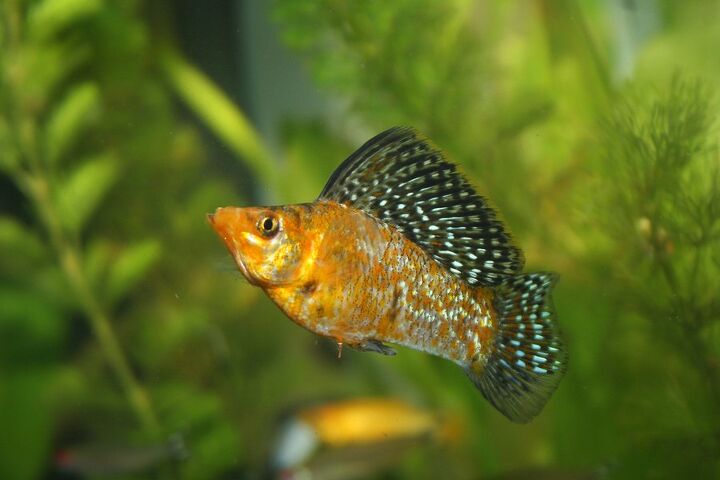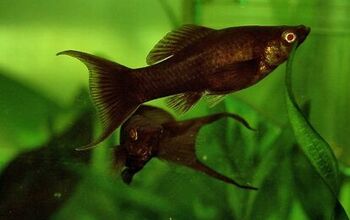Mollies – Freshwater


About Mollies – Freshwater
The fish commonly known as the Molly (Poecilia sphenops) or Mollies, is a freshwater fish that is often grouped in the same category as Swordtails and Guppies because it is a livebearer. These fish remain fairly small, growing to an average size around 3 to 4 inches and they are a very peaceful species which makes them a great addition to the community tank.
Mollies are a freshwater fish commonly known as the Molly.
The Molly can be found inhabiting freshwater streams and brackish environments in Mexico.
In the wild, Mollies are generally a dull silver color with a sprinkling of black spots. In captivity, however, Mollies have been selectively bred to produce a wide range of colors and patterns including gold, orange, red, green, black, and more. There are also some varieties of Molly which have unique fin and tail shapes such as the Sailfin Molly and the Lyretail Molly.
The Molly is a hardy species of fish that adapts well to a variety of different water conditions – it can even survive in brackish conditions. The fact that this species is so adaptable is what makes it very popular as a beginner fish. The ideal conditions for the Molly include warm water with a temperature range between 68°F and 82°F with a pH between 7.0 and 7.8. The water hardness should be between 10 and 25 KH. A tank for Mollies should be decorated with plenty of strong plants as well as rocks, caves, and driftwood for decoration.
The Molly is a hardy species of fish that adapts well to a variety of different water conditions.
Mollies are omnivorous fish so they will likely eat anything you offer them. The best diet for Mollies, however, will consist of meaty foods as well as plant matter. Feed your Mollies a combination of high-quality flakes or pellets as well as fresh or frozen foods and algae wafers or fresh vegetables.
Also read: Cost-Cutting Tips and Tricks for Aquarium Enthusiasts
The Molly is a livebearing species of fish which means that it delivers live young – it does not lay eggs. Not only do Mollies bear live young, but they breed very readily in the home aquarium. Mollies have fast growth rates and large brood numbers so a few Mollies can quickly turn into a large colony.
The Molly you find in the pet store belong to the same species but they have been selectively bred over hundreds of years to produce different body shapes as well as various tail and fin shapes. Some of the most popular Molly varieties for the home aquarium include the following:
- Common Molly (Short-Finned Molly)
- Black Molly (Midnight Molly)
- White Molly
- Golden Molly
- Balloon Molly
- Lyretail Molly
- Dalmatian Molly
- Sailfin Molly
Photo credit: EuToch/Bigstock; showkontor; Bigstock

Kate Barrington is the loving owner of two cats (Bagel and Munchkin) and a noisy herd of guinea pigs. Having grown up with golden retrievers, Kate has a great deal of experience with dogs but labels herself a lover of all pets. Having received a Bachelor's degree in English, Kate has combined her love for pets and her passion for writing to create her own freelance writing business, specializing in the pet niche.
More by Kate Barrington























